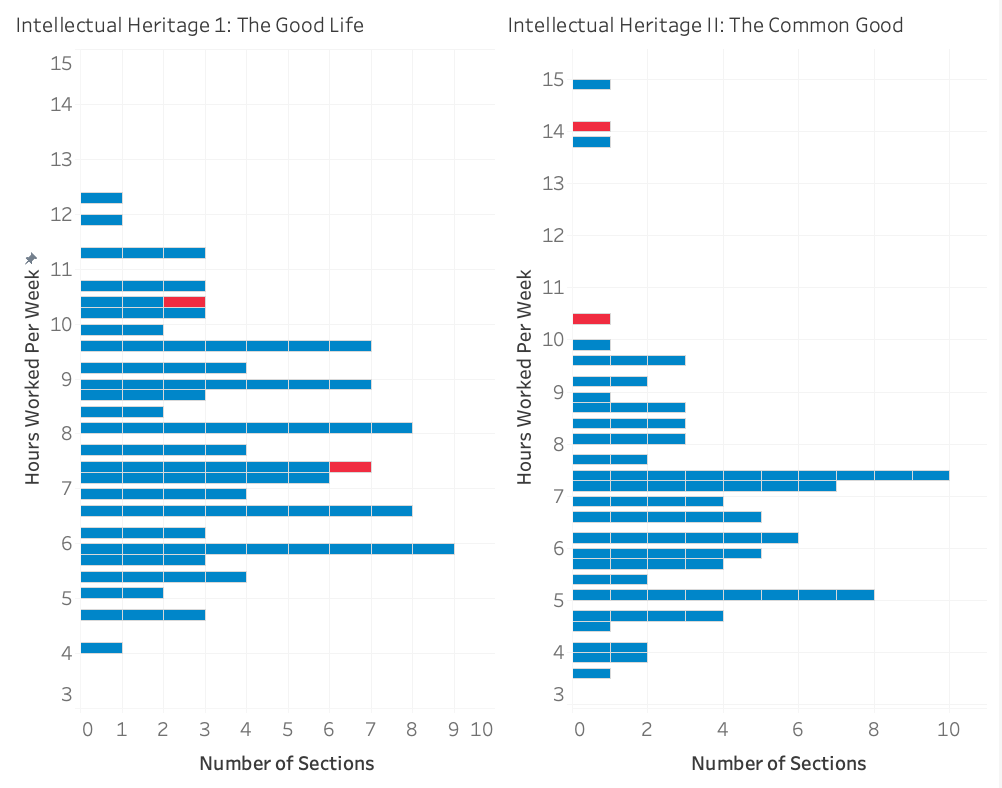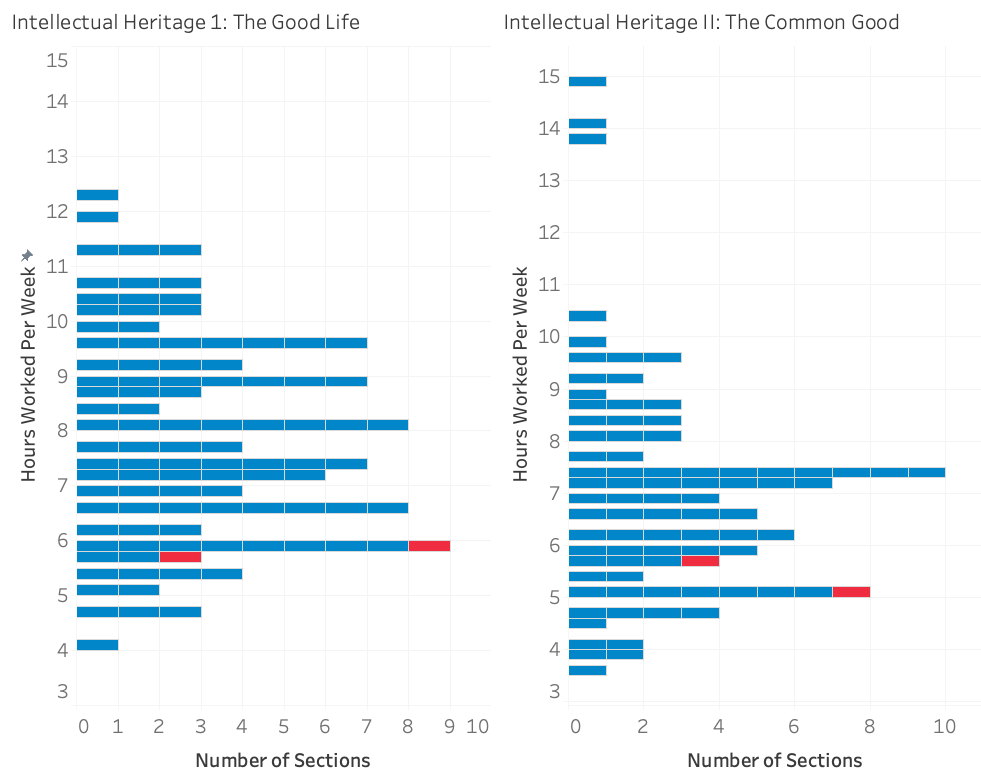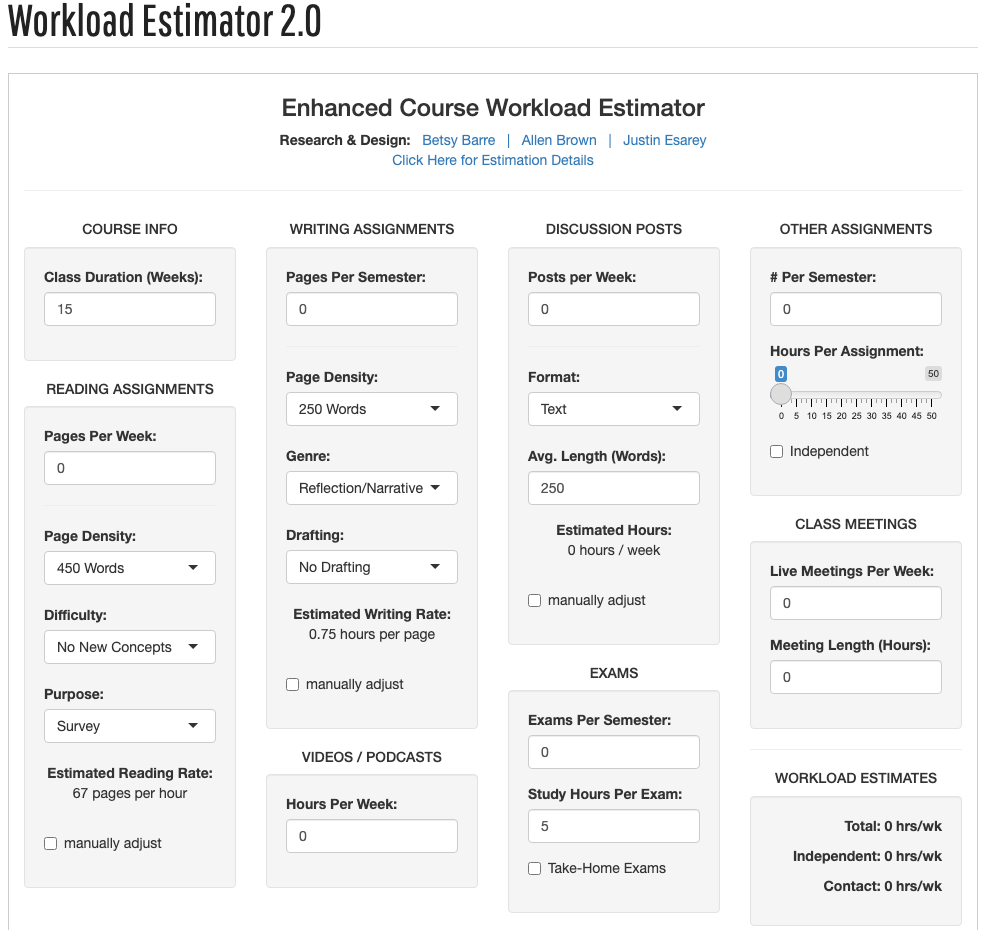It is a common student lament: “A friend of mine is taking the same class from a different teacher and she has far fewer readings and papers.” We’ve all heard it. Maybe we made similar complaints when we were college students. Just how consistent are the workload expectations across different sections?
At this point, the only data I have on student workload in general education classes at Temple comes from the feedback forms students fill out at the end of the semester. One of the questions asks students to assess the time spent on coursework.
“On average, how many hours per week have you spent on this course (or section), including: attending class, doing homework, attending rehearsals, doing readings, reviewing notes, writing papers, attending study groups, doing lab work (unless the lab is a separate section), and any other course-related work?”
The multiple-choice options are:
- 0-3
- 4-6
- 7-9
- 10-12
- 13-15
- 16-18
- 19+
Student evaluations are controversial, particularly when they are used to make personnel decisions. My interest, however, is not in evaluating instructors, but in seeing if there is evidence for students’ complaints about uneven expectations. Naturally, there are questions about the reliability of the data. As any parent with a teenager knows, self-reported estimates of time spent on task are suspect. Will there be any signal in the noise?
In the plot below I show the results for a single semester of data for two classes, Intellectual Heritage I and II. Both classes are required of all Temples students so there are dozens of sections offered every semester. I’ve converted the Likert scale into hours worked by using the mean value for each choice (e.g. 8 hours for choice 3). Each mark represents a different section of the class. The corresponding workload is an average across all of the students who completed the evaluation for that section (sadly, not all students complete the evaluation).
We see a fair spread in the reported effort, ranging from less than four hours per week to as many as 15. If you look across all GenEd courses the range is even greater, but here we have a factor of three to four difference between sections of the same class.
Many of the instructors teach four sections of IH I and/or IH II each semester. Let’s assume that each instructor uses the same syllabus for all of their sections of the same class, though it may differ from another instructor’s. Do students enrolled in different sections of the same class, taught by the same instructor (red markers), report a similar workload?
There is considerable spread, but the variation in the workload reported between sections taught by the same instructor is certainly less than between instructors overall. In the two examples shown, it seems clear that the students taking the class from Instructor A at least think they are spending more time on coursework than students taking the class from Instructor B. If they compare notes, they may grumble.
What I am really curious to know is whether the students’ self-assessment bears any relationship to the instructor’s belief of how much effort they are asking of their students. To answer this, I hope to encourage IH instructors to try this online workload estimator (screenshot below). If there is a reasonable correspondence between instructor and student perceptions, then it may be possible for instructors to use the workload estimator as a tool to balance the load across sections, addressing students’ concerns without requiring a common syllabus or restricting instructors’ freedom to choose their assignments.
This online workload calculator allows instructors to estimate the time students will spend on their class based on the frequency and type of reading, writing, and other assignments.



